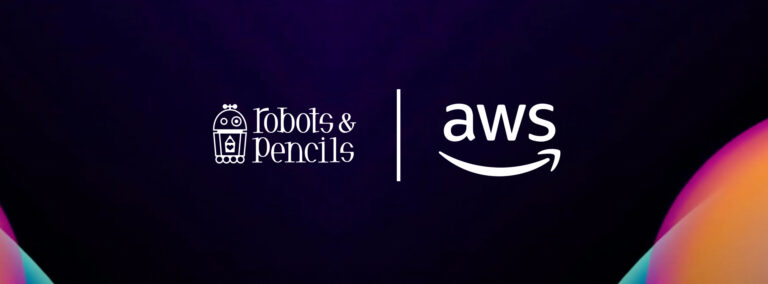Part 2 of our series Rewired: The New AI Architecture of Higher Education
Part 1: The New AI Architecture of Higher Education | Part 3: The Invisible Infrastructure That Determines Higher Education Success
Higher education faces a trust problem. College-going rates have dropped from 70% to 62% since 2016. When you ask students why, two themes dominate: affordability concerns and uncertainty about return on investment. Universities have responded by defending the value of degrees with more vigor and better marketing, but this strategy misunderstands what’s shifting. Students still want to learn, but they also want to know whether what they are learning matters to employers and how it connects to real employment opportunities. Degrees used to provide that assurance implicitly. Employers valued degrees, so students trusted their worth. But as employers shift toward skills-based hiring, that implicit value is eroding. Students now need explicit proof that their education translates into capabilities employers actually want.
Meanwhile, employers are adopting skills-based hiring at accelerating rates. They care less about where you went to school and more about what you can do. This creates an opportunity for institutions willing to reimagine credentials entirely and use AI to connect learning to career outcomes in real time.
The Credential Revolution
The degree is evolving to become modular, transparent, and aligned to real-world capabilities. Today’s students demand degree programs where industry-aligned certifications are embedded throughout, not tacked on at the end. They want digital credentials that verify specific competencies in formats employers can instantly understand. They need evidence of skills activated, not just courses completed.
This requires solving a problem most institutions are only beginning to articulate: making educational outcomes relevant and legible to employers. Right now, a degree signals institutional affiliation and field of study, but nothing more. Hiring managers need a clear view into whether a graduate can analyze datasets, lead cross-functional teams, or communicate complex ideas to non-technical audiences.
Institutions know these things. Course learning outcomes exist. Assessment data sits in learning management systems. Capstone projects demonstrate applied competencies. But this evidence is trapped in internal systems, inaccessible to anyone outside the institution. Students leave with a diploma that says what they studied, not what they can do.
Consider what this looks like from a student’s perspective. A sociology major graduates knowing they can conduct qualitative research, analyze social patterns, manage community-based projects, and synthesize complex information for diverse audiences. But their diploma says “Bachelor of Arts in Sociology.” Their transcript lists course titles and grades. They spend months after graduation trying to articulate their actual capabilities in resumes and interviews because their institution never made those skills visible or verifiable to employers.
Institutions that build interoperable credential systems with digital credentials that verify specific competencies, stackable certifications embedded throughout degree programs, and verified skill demonstrations will define a new model for learning. They will become the trusted translators between education and employment. They will award degrees and validate capabilities that matter, serving students throughout their careers as they return for new credentials and competencies.
Some institutions are already moving in this direction. Computer science programs embed AWS or Google Cloud certifications alongside degree requirements. Business schools offer IBM badges and Six Sigma certifications as integrated components of coursework. Universities partner with platforms like Credly and Canvas Credentials to issue competency-based digital badges that students can share directly with employers.
Arizona State University is taking this even further with its Trusted Learner Network (TLN), building infrastructure for distributed ledger-based, verifiable credentials that can follow students throughout their lifelong learning journey—not just credentials from ASU, but a vision of interoperable credential exchange across institutions, employers, and learning providers. This is what credential infrastructure looks like when institutions think beyond single transactions to lifelong relationships.
But most institutions are still treating credentials as isolated experiments rather than core infrastructure. A certificate program here, a digital badge pilot there, maybe some industry partnerships in high-demand fields. What’s missing is the institutional commitment to make skills verification foundational to how students progress through their education and how alumni demonstrate their capabilities throughout their careers.
This transforms the institutional relationship from a four-year transaction to a lifelong partnership. Alumni leave with more than a degree, they maintain a credential relationship with the institution, returning for micro-credentials, professional certifications, and competency validations as their careers evolve. This is the infrastructure that makes lifelong learning operationally viable, a unified system where a 22-year-old recent graduate and a 45-year-old mid-career professional engage with the same credential ecosystem.
Where AI Readiness Becomes Competitive Advantage
Recent research surfaces a critical gap. Students are already using AI tools extensively in their academic work for research, writing, and problem-solving. Meanwhile, fewer than 20% of faculty feel confident teaching with or about AI. Most institutions are treating this as a training problem: a few workshops on prompt engineering, some guidance on academic integrity, maybe a pilot program or two.
That response entirely misses the opportunity. The institutions that will differentiate themselves are doing more than training faculty on AI tools. They’re integrating AI into how students learn, how advisors guide, and how the institution operates. The difference is between treating AI as a tool to learn about versus treating it as the intelligence layer that makes every system more responsive.
Consider what this looks like operationally. Right now, when a student struggles in a course, they might get flagged for early intervention. For example, they may receive an automated email suggesting the tutoring center, or maybe an advisor reaches out to recommend better study habits or office hours. That’s reactive and generic.
An AI-informed institution operates differently. The system recognizes the struggle in real-time and surfaces personalized tutoring resources at the moment intervention is needed. These are not generic study tips, but alternative approaches to the material aligned with how that student learns best. When the student registers for next semester, the system adjusts course recommendations to sequence their learning more effectively while still maintaining progress toward their degree. The advisor still has the conversation, but now they’re working with intelligence about what approaches are actually effective for this student.
The difference is more than better outcomes. It’s operational efficiency at scale. An advisor managing 400 students can’t manually track how each student learns best, which interventions are working, and what course sequences will set them up for success. But an AI-informed system can surface exactly which students need proactive outreach, what specific guidance would be most relevant, and how to sequence their learning path most effectively. The advisor’s time shifts from administrative triage to high-value relationship building.
The challenge is organizational. It requires integrating intelligence across disconnected systems like advising platforms, learning management systems, career services tools, and student information systems. It requires training staff to use AI-informed insights without replacing their professional judgment. And it necessitates building workflows where AI augments human interaction rather than creating another dashboard no one checks.
I’ve watched institutions pilot AI capabilities that never scale beyond the pilot. A chatbot answers basic questions but cannot access student records. An early alert system generates so many flags that advisors cannot possibly respond to them all, leading them to ignore the alerts entirely. An AI-powered degree planning tool recommends optimal course sequences but operates in a separate system, disconnected from the advising and registration workflows students actually use.
The competitive advantage comes from embedding AI into how every system serves students. That requires treating AI integration as an operational transformation, not a technology deployment. And it requires infrastructure built to make intelligence actionable, not just theoretical.
Proving Value Through Skills and Intelligence
The institutions that solve the ROI crisis will be the ones that make learning outcomes transparent and connected to employment. They’ll build credential systems that translate education into employer-legible skills and use AI to connect students with career pathways from day one, not just senior year. Industry certifications will be embedded throughout their degree programs rather than treating them as add-ons.
This transformation requires institutions to fundamentally rethink how they measure success, from degrees awarded to skills activated, from course completion to demonstrated capability, and from graduation metrics to career readiness at every stage. It requires building credential systems that prove competency, not just attendance, and treating career preparation as foundational to education, not a separate service bolted on at the end.
The institutions leading this work will be the ones that understand proving value is no longer a marketing problem, but an infrastructure problem. You can’t demonstrate skills if you don’t have systems to verify and credential them. You can’t connect learning to careers if your academic systems don’t talk to your career services platforms. You can’t serve students throughout their lifelong learning journey if your infrastructure is designed exclusively for traditional four-year degree seekers.
The next article in this series examines the operational infrastructure that makes all of this possible. The invisible systems that determine whether students persist or leave, whether institutions can deliver on these promises at scale, and whether the transformation from traditional education to intelligent learning ecosystems actually works in practice.
Read part 3 of our Rewired series, The Invisible Infrastructure That Determines Higher Education Success. If you missed our first article in this series, check out The New AI Architecture of Higher Education.
The pace of AI change can feel relentless with tools, processes, and practices evolving almost weekly. We help organizations navigate this landscape with clarity, balancing experimentation with governance, and turning AI’s potential into practical, measurable outcomes. If you’re looking to explore how AI can work inside your organization—not just in theory, but in practice—we’d love to be a partner in that journey. Request an AI briefing.
Key Takeaways
- Credential innovation solves the ROI crisis. Making educational data legible to employers through verifiable skills credentials and transparent competency validation transforms how institutions prove value.
- AI fluency becomes competitive advantage when woven into institutional operations. The differentiation comes from building systems where AI enhances advising, career services, and student support at every stage.
- Skills-based hiring creates opportunities for forward-thinking institutions. Universities that embed industry certifications, create interoperable credential data, and connect learning to labor markets will unlock new revenue streams.
FAQs
Why do credentials need to change when degrees still matter to employers?
Employers increasingly hire based on demonstrated skills rather than degree prestige. They need to understand what a graduate can actually do, not just where they studied. Verifiable digital credentials that translate coursework into specific competencies help employers make better decisions and help graduates prove their capabilities clearly.
What makes AI fluency different from AI adoption in higher education?
AI adoption means using tools like ChatGPT or administrative automation. AI fluency means weaving intelligent systems into how students learn, advisors guide, career services operate, and institutions run. It’s the difference between adding technology and reimagining how education works when intelligence can personalize, predict, and adapt at scale.
How do institutions make educational data legible to employers?
Through interoperable credential systems that translate courses into demonstrated competencies. Instead of transcripts showing only course titles and grades, modern credentials verify specific skills like data analysis, cross-functional leadership, or technical communication. Digital badges and stackable certifications create a common language between education and employment.
What does AI-powered career services look like in practice?
AI-powered career services track labor market trends in real time, connect coursework to emerging job opportunities, help students build competency portfolios throughout their education, surface relevant alumni mentors based on career interests, and personalize guidance based on individual strengths and market demand. The technology enables career planning from freshman year instead of senior year scrambling.



